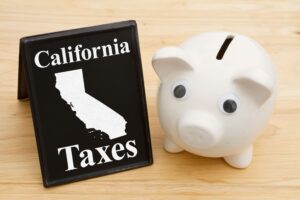
This value changes depending on whether the company wishes to repurchase shares from the market or sell out more of its authorized shares from within its treasury. The profit and loss statements in nearly every corporate earnings press release will include both basic and diluted shares outstanding. While shares outstanding account for company stock that includes restricted shares and blocks of institutional shares, floating stock specifically refers to shares that are available for trading. Floating stock is calculated by taking outstanding shares and subtracting restricted shares.

An investor is more likely to invest in a firm that reports earnings per share of 50 USD and cash earnings per share of 30 USD than one that reports earnings per share of 50 USD but no cash earnings per share. A pro forma or continuing earnings per share is a variant of earnings per share that excludes number of outstanding shares formula one-time events and extraordinary occurrences. For example, if a company has 100 units of common shares and makes 1000 USD to pay shareholders, each share unit will be worth 10 USD. If the firm is dissolved, investors who hold preferred shares will be reimbursed the amount they paid for the shares.
Investors can find the total number of outstanding shares a company has on its balance sheet. Outstanding shares can also be used to calculate some key financial metrics, including a company’s market cap https://www.bookstime.com/ and its earnings per share. They are separate from treasury shares, which are held by the company itself. The term outstanding shares refers to a company’s stock currently held by all its shareholders.

These may later appear in the form of a secondary offering, through converting convertible securities, or issued as part of employee compensation such as stock options. Due to these factors, the actual number of shares outstanding can vary over the course of a reporting period. A company’s outstanding shares, the total shares held by shareholders excluding treasury stock, can fluctuate due to various factors. Notably, stock splits and reverse stock splits significantly influence the number of outstanding shares. Outstanding shares represent a company’s shares that are held by investors, whether they’re individual, institutional, or insiders.
By contrast, many older stalwart companies are likely to have a number of shares outstanding that matches its number of shares fully diluted. While outstanding shares determine a stock’s liquidity, the share float—shares available for public trading – plays a crucial role. A company with 100 million outstanding shares, but with 95 million held by insiders and institutions, will have a constrained float of only five million shares, impacting its liquidity. But the company, as in our example above and using the treasury stock method, has 5 million shares linked to options and warrants. Let’s assume the company also has $500 million in convertible debt with a conversion price of $5.
The purpose of the repurchase can also be to eliminate the shareholder dilution that will occur from future ESOs or equity grants. A company may announce a stock split to increase the affordability of its shares and grow the number of investors. For instance, a 2-for-1 stock split reduces the price of the stock by 50%, but also increases the number of shares outstanding by 2x. Shares issued generate the assets or other value for founding or developing a company. For example, a company may retain authorized shares to conduct a secondary offering later, sometimes called a tender offer, or use them for employee stock options.


Austin specializes in the health industry but supports clients across multiple industries. “Shares outstanding” also is a line in the data that is displayed with any stock quote. The larger stock market is made up of multiple sectors you may want to invest in. We Fools may not all hold the same opinions, but we all believe that considering a diverse range of insights makes us better investors. Get stock recommendations, portfolio guidance, and more from The Motley Fool’s premium services.
For instance, restricted shares refer to a company’s issued stock that cannot be bought or sold without special permission by the SEC. Often, this type of stock is given to insiders as part of their salaries or as additional benefits. This refers to a company’s shares that are freely bought and sold without restrictions by the public. Denoting the greatest proportion of stocks trading on the exchanges, the float consists of regular shares that many of us will hear or read about in the news.
It is a less-commonly used number in the financial reporting of privately-held businesses. As discussed, floating stock is the total number of shares available for public investors to buy and sell. Sometimes the figure is expressed as an absolute figure (ex. 5 million shares) or as a percentage of the firm’s total outstanding shares. The number of shares outstanding for a company is equal to the number of shares issued minus the number of shares held in the company’s treasury.
The float gives valuable information to investors, like how a company may proceed in the future if it determines it needs more money or the ownership structure of the company. A widely held opinion is that when these companies are repurchasing shares, they tend to do it when they have a lot of cash. This usually means that they are performing well and have been having success. While there seems to be an abundance of positive effects through a share repurchase program, there are still some things that businesses should keep in mind before implementing one.